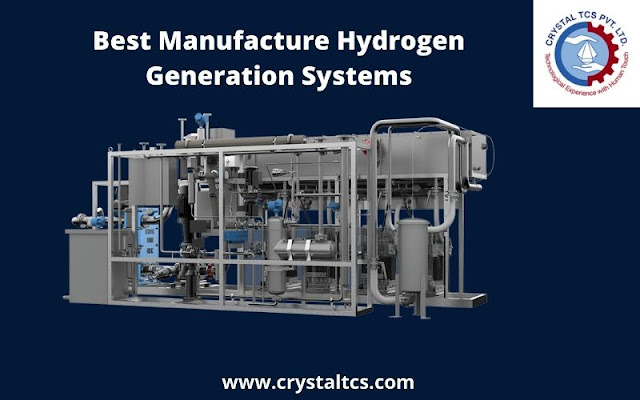Hydrogen generation can be produced from diverse, domestic
resources including fossil fuels, biomass, and water electrolysis with
electricity. The environmental impact and energy efficiency of hydrogen depend
on how it is produced. Several projects are underway to decrease costs associated
with Hydrogen Generation System.
Most hydrogen generation system used in India is produced at
or close to where it is used—typically at large industrial sites. The
infrastructure needed for distributing hydrogen to the nationwide network of fuelling
stations required for the widespread use of fuel cell electric vehicles still
needs to be developed. The initial rollout for vehicles and stations focuses on
building out these distribution networks, primarily in the region.
There are a number of ways to Hydrogen Generation System:
- Natural Gas Reforming/Gasification: Synthesis gas, a mixture of hydrogen, carbon monoxide, and a small amount of carbon the dioxide is created by reacting natural gas with high-temperature steam.
- Synthesis gas can also be created by reacting coal or biomass with high-temperature steam and oxygen in a pressurized gasifier, which is converted into gaseous components—a process called gasification. The resulting synthesis gas contains hydrogen and carbon monoxide, which is reacted with steam to separate the hydrogen.
- Electrolysis: An electric current splits water into hydrogen and oxygen. Power-to-hydrogen projects are taking off, where excess renewable electricity, when it's available, is used to make hydrogen through electrolysis.
- Renewable Liquid Reforming: Renewable liquid fuels, such as ethanol, are reacted with high-temperature steam to produce hydrogen near the point of end-use.
- Fermentation: In Hydrogen Generation System biomass is converted into sugar-rich feedstocks that can be fermented to generate hydrogen.
 |
| Best Manufacture Hydrogen Generation Systems |
Salient Features of our Hydrogen generation systems:
- The unit generates Hydrogen at pressure up to 30 bar, eliminating the need for a separate gas compressors for boosting the pressure.
- Robust and Skid Mounted construction enables ease of handling and mounting.
- The units can also be installed inside a single container, eliminating the need for a separate unit housing facility.
- Short Cold Start times enable to maximize process output.
- High reliability combined with High efficiency makes the System cost-effective over its life cycle.
Hydrogen Generation
by Steam reforming of Methane and Natural Gases
Steam reforming or steam methane reforming is a chemical
synthesis for producing syngas (hydrogen and carbon monoxide) from hydrocarbons
such as natural gas. This is achieved in a reformer which reacts steam at high
temperature and pressure with methane in the presence of a nickel catalyst. The
steam methane reformer is widely used in the industry to make hydrogen.
Hydrogen Generation
by PSA Technology with cracking of Ammonia and Methanol
PSA (Pressure Swing Adsorption) hydrogen generator system is based on mixed air which contains hydrogen
gas (ammonia gas, methanol-reforming, natural gas reforming) as raw material
air, by using special molecular sieves, taking PSA principle to make hydrogen
gas.
Hydrogen is an important utility for numerous applications
in multiple industries. Users in a wide range of industries can benefit from
operating a cost-effective Crystal TCS
Pvt. Ltd Hydrogen generates and reduces its production costs significantly.
We at Crystal TCS Pvt. Ltd has performed
intensive research and development for coming up with Hydrogen Generation Systems.
Crystal TCS Pvt. Ltd suggests the sentiment of delivering a Human touch to our
every relationship occupies a central place in the very values behind the the foundation of our company and we always try to be up to it, be it in our
interactions with our Customers, Suppliers, and Employees.
Reduce Your Production Costs Significantly With Our Hydrogen Generation System!
Reliable Systems.
Contact us: 02532501600
E-mail: info@crystaltcs.com
Comments
Post a Comment